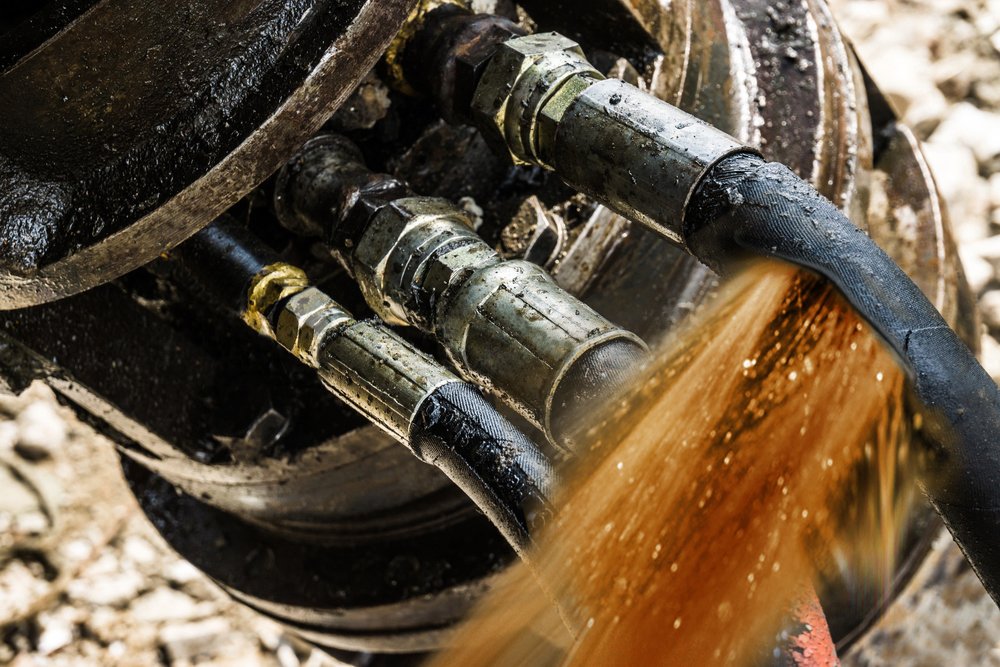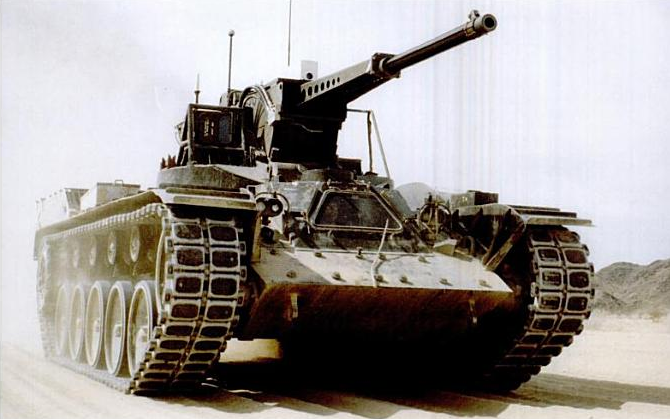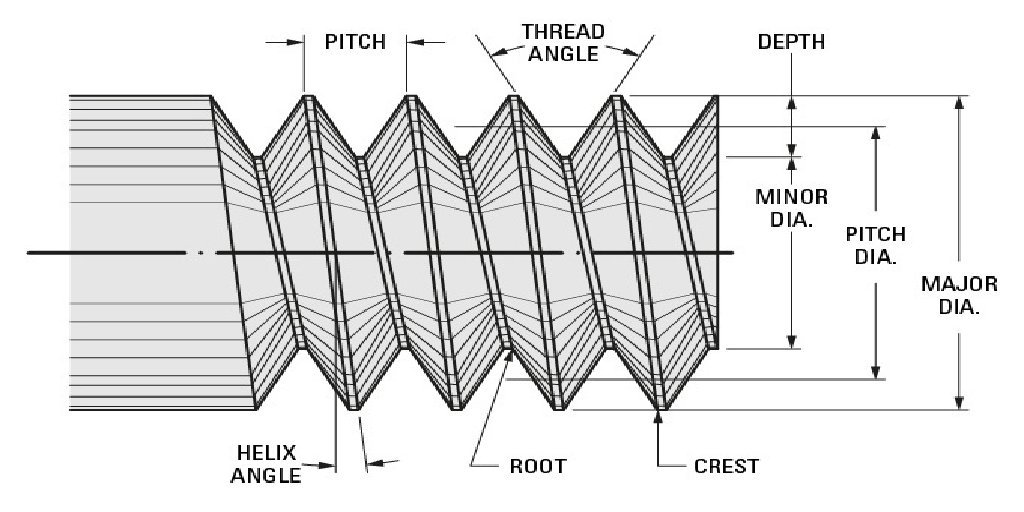
Discussions over the weekend around oft overlooked fact that M1 remains one of few Western tanks to use hydraulic turret drive, where essentially all peer AFV designs have migrated to all-electric
A short thread on the actual dangers of hydraulic drive, and a trope along the way
A short thread on the actual dangers of hydraulic drive, and a trope along the way

Tank turrets are really heavy – 26 tonnes for an M1 Abrams – and need to move fast to traverse weapons and respond to fine control commands for stabilisation. As a result hydraulic systems were for a long time the norm for control 

If you want a primer on hydraulics, this website has a nice set of guides fpsindia.net/how-do-hydraul…
For today what you need to know is oil is at high pressure (1,00 psi or more) and forced through pipes or hoses to actuate physical movement of big heavy components. It also gets quite hot when working. Those two characteristics become relevant imminently. 

The critical risk with hydraulic drives is their potential behaviour when damaged or otherwise failing. With the systems running at high pressure, any leak in the system will elicit a high velocity spray of fluid. 

This has a number of significant risks. In respect of the vehicle, you will suffer degradation and then total failure of your hydraulic system. For AFV that typically means no more turret movement or stabilisation without manual cog spinning by the gunner. 

You're essentially removed from the fight in any meaningful capacity, and likely to be easily outmanoeuvred and killed if you don’t withdraw. Traversing by hand is at least a possibility though.
More immediately however, you have high pressure and temperature hydraulic fluid spraying from the breach in the line. Regardless of the fluid composition, which comes next, this is hugely dangerous.
It can scald crewmembers, fry your electrics, and generally make continued operation of the vehicle highly unlikely, as everything is getting covered in hot oil at a relentless pace and volume. 

The pervading fear and the key driver of the move to electric drive is fire. In the past hydraulic fluid was highly flammable, with a flash point c.150-300C and autoignition from 300C upwards (sometimes a little lower c.260C). 

That’s well within the realm of the environment during a vehicle penetration or other vehicle fire. Even something simple like a line break near the engine or exhaust components could readily ignite it. 

Thereafter your vehicle is on a downward spiral to being a burn out hulk, even with a fire suppression system you have a continuously venting high pressure flame thrower inside your vehicle, and the fire can propagate back into the hydraulic line and through the whole vehicle 

The pressure of the system is a significant risk as even a tiny leak can spray a finely atomised mist of oil and air a considerable distance, subsequently igniting as a rather effective fuel air explosive somewhat ceaselessly as the system continues to vent under pressure.
However *TROPE ALERT* hydraulic turret drive does not mean an assured fire laden death trap in modern AFV, because chemical engineering has come to the rescue, or at least mitigation for those stubborn enough to stay with hydraulics... 

Because from ~1950 industry, which uses hydraulics on far larger scale in arguably more dangerous environments than even the military (foundries/mines/steel mills are basically permanently on fire & filled with hydraulic machinery in poor state of repair) moved to mitigate risk 

They came up with the concept of fire-resistant hydraulic fluids (FRHFs), which seek to reduce (but never eliminate) the risk of hydraulic fluid catching alight under high pressure leaks and breaches. 

There are two broad approaches; (1) introduction of water into the fluid, and (2) use of synthetic non-aqueous products instead of oil.
(1) Sees a water glycol or invert imulsion (both c.40% water) as hydraulic fluid along with additives to increase viscosity and anti-wear properties. Result is fluid with high water content that when atomised in a leak water will try to ‘snuff’ the fire as it attempts to ignite. 

(2) Uses synthetic fluids that are inherently fire resistant (but fireproof) such as phosphate esters. They have been widely used in industry and military applications, but are rather grim from environmental and cost angles, so are losing popularity. 

A new synthetic approach uses polyol esters derived from reactions between animal/vegetable fats and synthesized organic alcohols, and are much cheaper and environmentally friendly, so have been picking up use for quite a while now as the preferred option in civil domains
What does any of that mean? Regardless of choice, modern FRHF hydraulics are not especially flammable, but to be clear, are not fireproof. To be certified in the US, they go through a few tests that mean the risk of uncontrolled fire is quite low. 

Tests include spraying warmed oil at 1,000 psi through a nozzle that simulates a high pressure leak onto a flame. This will burn, its still atomised oil, but fire must self-extinguish when the flame is removed and must not propagate to the nozzle. No burn may last longer than 5s
Another test has a continuous spray of 60 seconds onto a metal channel heated to >700C. It may not ignite, or if it does only on the channel and any fluid rolling off the channel may not burn, nor may redirected spray burn.
Other organisation such as the Mine Safety & Health Administration (MSHA) do similar tests with additional ignition sources – open flames, welding arcs, burning rags, hot manifolds, molten metal etc. Again success is usually limited burns of <5 seconds and no propagation of fire. 

Back to tanks! Having seen real world results of AFV hydraulics in the wars of the 1970s, the US led a charge to find something not hideously flammable for their AFVs, seeking a straight swap fluid rather than novel techs like electric drive that everyone else was looking at. 

The existing standard US hydraulic fluid was MIL-H-6083 hydraulic fluid, also known as OHT, and it burned REALLY well (flashpoint was only 80C). After some experimentation with loads of options, they went with an interim solution, a fluid called MIL-H-46170, or FRH.
FRH was adopted on M1 in 1980 and raised flash point to c.200C which was better, but still not great when you consider the ignition threats that can occur in a combat vehicle. Also, many US AFV didn’t make the swap from OHT to FRH and used OHT for decades to follow. 

Latest standards for FRH claim self-extinguishing after initial ignition (so drips and spray wont continue to burn like MSHA standards), flame propagation of no more than 0.3cm/s, a flash point of 246C and autoignition of 343C
One reason for that is that FRH struggles at low temperature, becoming so viscous as to prevent function in very cold climates and requiring pre-warming systems and other mitigating procedures. 

In the 90s US came up with MIL-H-53119, or CTFE. Its quite expensive but non-flammable. Expense was acceptable as its a critical survivability issue and they worked out in training over prior 10 yrs theyd already had more than $20m damage to AFV from hydraulic leak induced fires
However, CTFE was an all-new fluid, not petroleum based, and required system modifications (it corrodes some components), so it was shelved on cost of conversion grounds to instead be used for hypothetical new design vehicles in the future. 

They looked at adding small (c.3%) halon based compounds into FRH, just skimming under the boundaries of the Montreal Protocol Treaty banning them, and this looked like it made the fluid near impossible to ignite. Im not clear if that ever progressed, if anyone knows do comment. 

Meanwhile M1 continues to use FRH, low risk but by no means no risk. Since the banning of Halon-1301, modern fire suppressant isn’t brilliant against atomised hydraulic fuel air fire, and if the system fails to operate or doesnt extinguish you have an uncontrolled fuel source 

So modern hydraulics aren’t assured death traps like hydraulics of old. But they’re also far from safe versus minimal risk electric drive systems. Electric is also massively lower maintenance, more reliable and has finer control, but that’s a different discussion 

Disclaimer: I’m no chemist, am open to correction, but this the product of reading a half dozen papers on hydraulic fires and some TRADOC-type studies on US hydraulic fluid development, and at least offers a bit of science to the knowledgebase. /end #tanktwitter #miltwitter
• • •
Missing some Tweet in this thread? You can try to
force a refresh


















